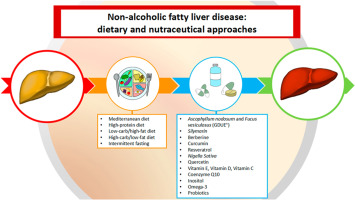Non-Alcoholic Fatty Liver Disease: Non-Alcoholic Fatty Liver Disease (NAFLD) has emerged as a significant public health challenge worldwide, affecting nearly 38% of adults, according to a systematic review published in the Journal of Hepatology. Once considered a rare liver condition, NAFLD is now widespread, silently affecting millions who may not even realize they have it. Despite its name, NAFLD is not caused by alcohol consumption, making its underlying triggers more complex and less obvious to the general public.
Contrary to the common perception that fatty liver is simply the accumulation of fat in the liver, medical experts now understand it as a multifactorial condition. Dr. Robert DeBease, a functional medicine specialist, explains that NAFLD is less about fat itself and more about nutrient imbalances and hidden metabolic triggers. Factors such as copper deficiency, vitamin A levels, and sugar intake — including natural sugars like fructose found in fruits — play a crucial role in liver health and the onset of NAFLD.
Understanding the root causes of NAFLD is critical because the liver is one of the body’s primary detoxifying organs. Its key functions include processing nutrients, managing iron and copper balance, and metabolizing sugars and toxins. When these functions are disrupted, the liver struggles to maintain equilibrium, leading to fat accumulation and long-term damage. This article delves into the causes of NAFLD, nutrient-related triggers, and practical strategies to support liver health.
Understanding NAFLD
What Is NAFLD?
NAFLD is a condition characterized by excess fat buildup in the liver that is not caused by alcohol consumption. Over time, if untreated, it can progress to Non-Alcoholic Steatohepatitis (NASH), fibrosis, cirrhosis, or even liver failure. While lifestyle factors such as diet and sedentary behavior are widely acknowledged contributors, emerging evidence highlights a deeper metabolic component influenced by nutrient imbalances.
Why Fat Alone Isn’t the Culprit
While fat accumulation is the hallmark of NAFLD, Dr. DeBease emphasizes that hidden triggers often drive this process. Copper, vitamin A, and fructose metabolism play pivotal roles. The liver’s function includes regulating iron in the body — keeping it in the bloodstream rather than allowing it to accumulate excessively in the liver. Without adequate copper or vitamin A, iron becomes trapped in the liver, contributing to fat buildup, oxidative stress, and liver dysfunction.
Read about: Food Is Medicine: Event Cultivates New Solutions for Sustainable Health
Nutrient Imbalances That Contribute to NAFLD
Copper Deficiency
Copper is essential for enzymes that regulate iron metabolism. A deficiency can impair the liver’s ability to transport iron out of its cells, leading to toxic accumulation. This, in turn, can increase fat deposition and inflammation, both hallmarks of NAFLD.
Vitamin A Imbalance
Vitamin A is vital for liver function, antioxidant protection, and fat metabolism. Both deficiency and excessive intake of vitamin A can disrupt liver function. An imbalance may impair detoxification, increase oxidative stress, and contribute to fat accumulation in liver tissues.
Fructose and Sugar Overload
Even naturally occurring sugars, such as fructose from fruits, can influence liver fat deposition if consumed in excess. Fructose is metabolized primarily in the liver and can promote lipogenesis — the creation of fat — when intake surpasses the liver’s metabolic capacity. Moderation and mindful consumption are key to preventing this hidden trigger.
Lifestyle and Dietary Strategies to Fix NAFLD
Balanced Nutrition
- Prioritize nutrient-rich foods that support liver health: leafy greens, lean protein, nuts, seeds, and moderate fruit intake.
- Copper sources: shellfish, seeds, nuts, and dark chocolate.
- Vitamin A sources: liver, carrots, sweet potatoes, and dark leafy greens.
- Avoid excess processed sugars, refined carbohydrates, and sugary beverages.
Physical Activity
Regular exercise enhances fat metabolism and improves liver function. Aerobic exercise, strength training, and high-intensity interval training (HIIT) are especially beneficial for reducing liver fat and improving insulin sensitivity. Yoga and low-impact activities support flexibility and stress reduction but should complement, not replace, vigorous physical activity.

Lifestyle Adjustments
- Maintain a healthy weight to reduce liver fat and inflammation.
- Limit alcohol consumption, even though NAFLD is non-alcoholic in origin, alcohol can exacerbate liver damage.
- Prioritize sleep and stress management, as chronic stress can affect metabolic and liver health.
Conclusion
Non-Alcoholic Fatty Liver Disease is a multifaceted condition that goes beyond simple fat accumulation in the liver. Nutrient imbalances, particularly copper deficiency, vitamin A irregularities, and excess fructose, are significant contributors to NAFLD. Understanding these hidden triggers is essential for both prevention and effective management.
Dietary adjustments, combined with regular physical activity, can dramatically improve liver function and reverse early stages of NAFLD. Mindful consumption of nutrient-dense foods, moderation in sugar intake, and lifestyle interventions form the cornerstone of liver-friendly habits.
For those diagnosed with NAFLD, it is crucial to work with healthcare professionals to assess nutrient status, develop a personalized nutrition plan, and monitor liver health through regular testing. Early intervention can prevent progression to NASH, cirrhosis, or liver failure.
Ultimately, the solution to NAFLD is not merely about “cutting fat” but optimizing liver function through holistic nutrient and lifestyle management. By understanding the underlying mechanisms and taking proactive steps, individuals can restore liver health and improve overall well-being.
Also read: iQOO Neo 11 Launching on October 30: 7,500mAh Battery, 2K Display, and Everything We Know So Far
FAQs: Non-Alcoholic Fatty Liver Disease (NAFLD)
1. What causes Non-Alcoholic Fatty Liver Disease (NAFLD)?
NAFLD is primarily caused by a combination of lifestyle, dietary, and metabolic factors. Key contributors include nutrient imbalances such as copper deficiency, vitamin A irregularities, excess sugar intake (including fructose), obesity, insulin resistance, and sedentary lifestyle. Genetics may also play a role in predisposing individuals to liver fat accumulation.
2. Can NAFLD be reversed?
Yes, NAFLD can be reversed, particularly in its early stages. Reversal involves a combination of lifestyle interventions including weight loss, regular physical activity, dietary adjustments, and correcting nutrient imbalances. Studies show that even a 5–10% reduction in body weight can significantly reduce liver fat and inflammation.
3. What foods should be included to support liver health?
Liver-friendly foods include leafy greens, cruciferous vegetables, lean protein sources, nuts, seeds, and fruits in moderation. Copper-rich foods (shellfish, nuts, seeds) and vitamin A-rich foods (carrots, sweet potatoes, dark leafy greens) are especially beneficial. Minimizing processed foods, refined sugars, and high-fructose foods is essential for reducing fat buildup in the liver.
4. How important is exercise in managing NAFLD?
Exercise is critical for managing NAFLD. Aerobic activities like walking, jogging, or cycling, combined with resistance training, improve insulin sensitivity, reduce liver fat, and support cardiovascular health. Even moderate-intensity exercise, when performed consistently, can significantly impact liver health and overall metabolism.
5. Are there medical treatments for NAFLD?
Currently, no medications are specifically approved for NAFLD. Treatment focuses on lifestyle interventions such as dietary modification, physical activity, and managing comorbidities like diabetes or high cholesterol. Regular monitoring of liver enzymes and imaging may be recommended, and in advanced cases, consultation with a hepatologist is essential.
